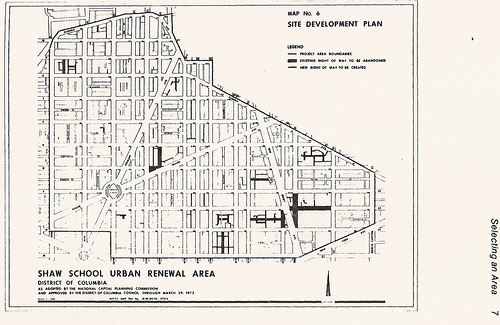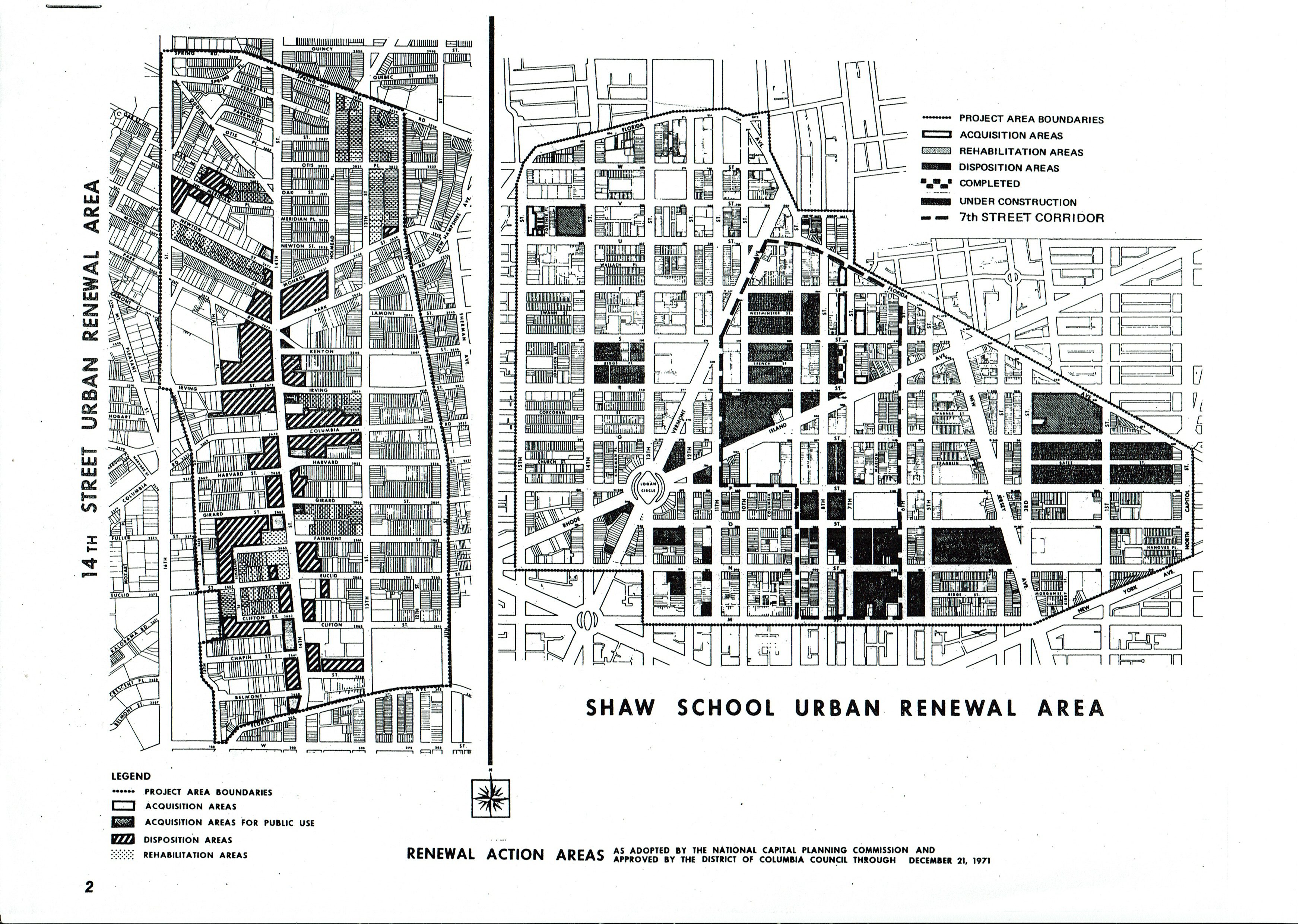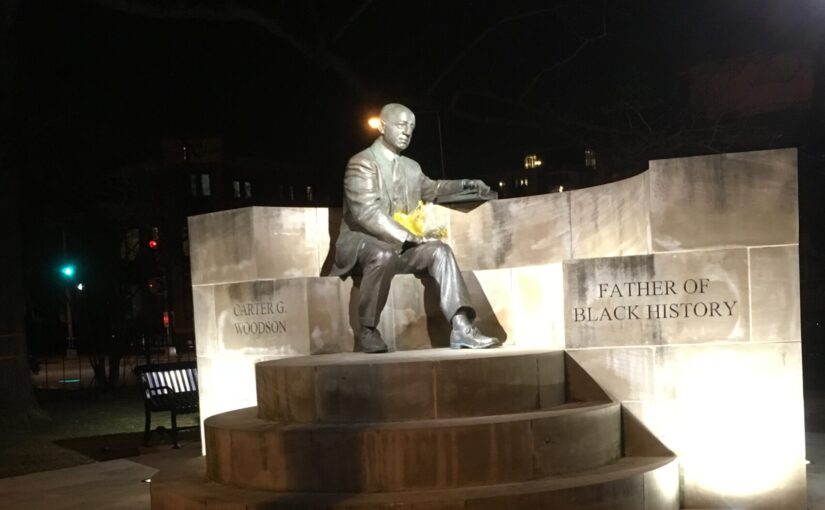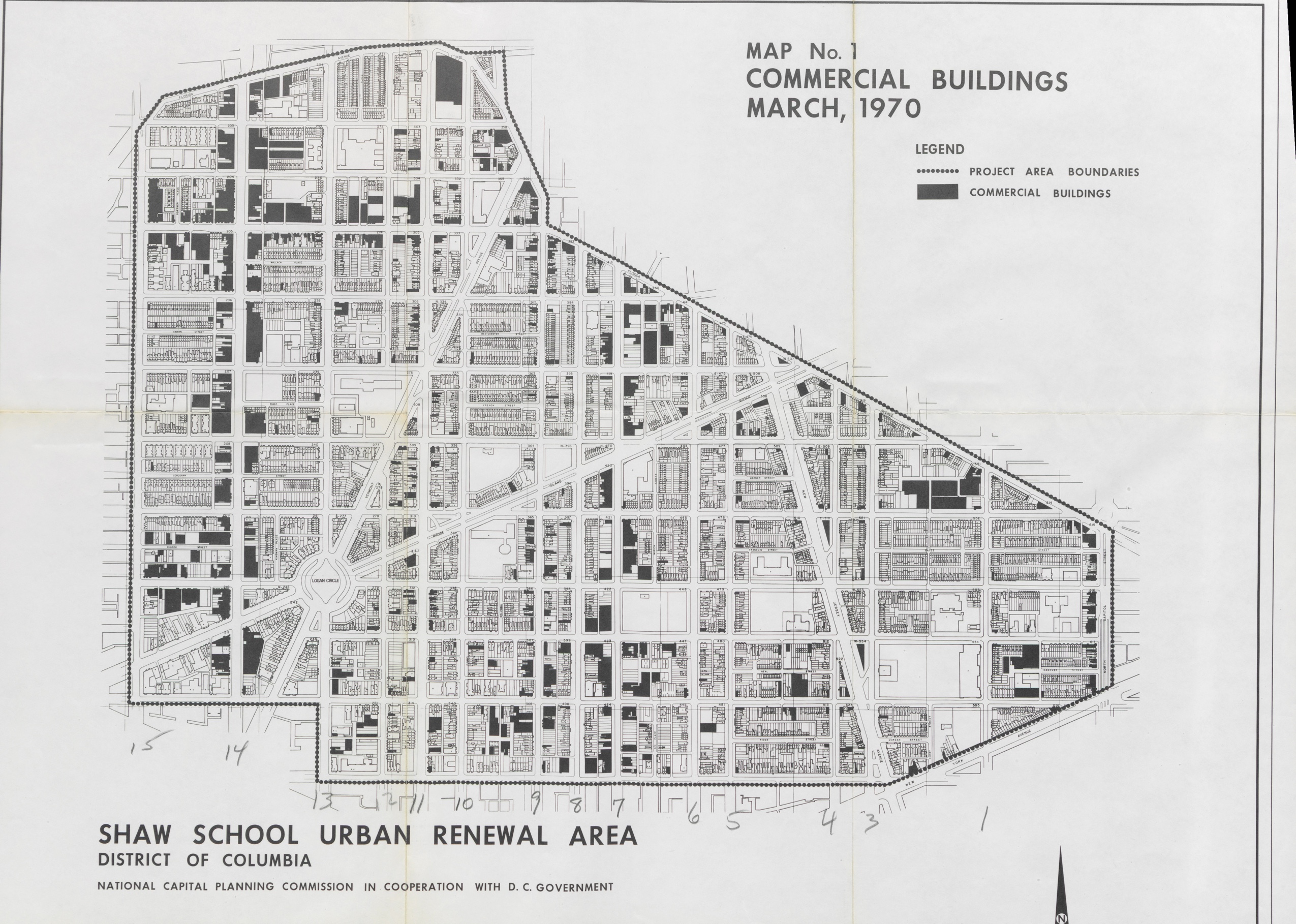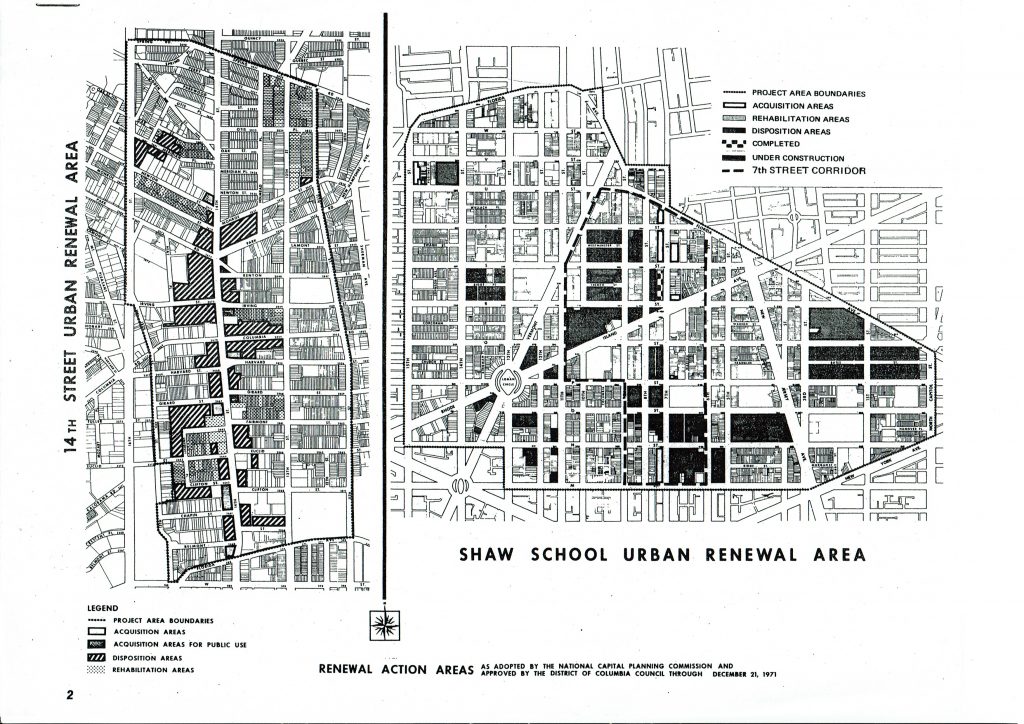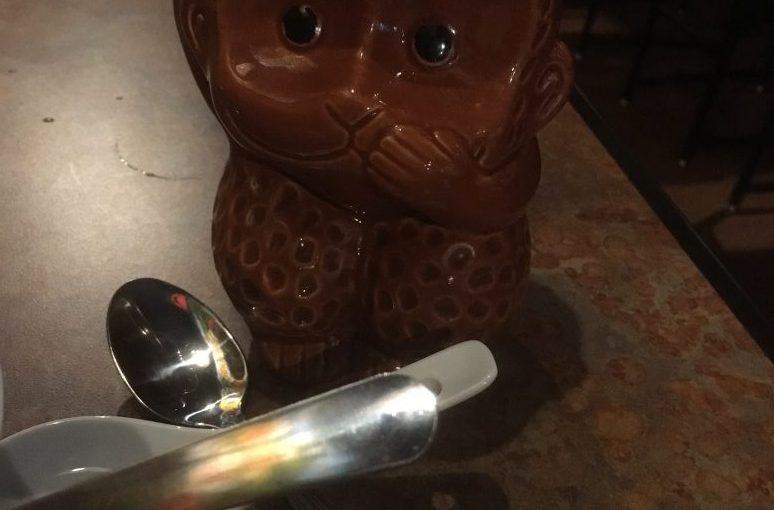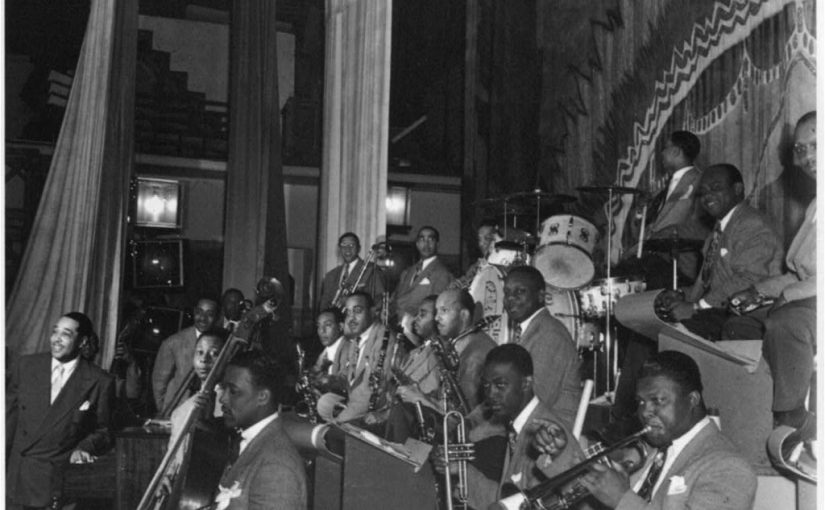Everyso often people argue about the boundaries of the Shaw neighborhood. Here’s a map from 1971 from the National Capital Planning Commission. It also shows the 14th St Urban Renewal Area, but little matter.
Tag: Shaw
That Martin Luther King speech I could never seem to locate
It’s Martin Luther King Jr Day so here’s my recycled MLK post.
Around about the early part of the year I go pecking about looking for the speech Rev. Martin Luther King Jr gave in Shaw. And I can never find it when I look. 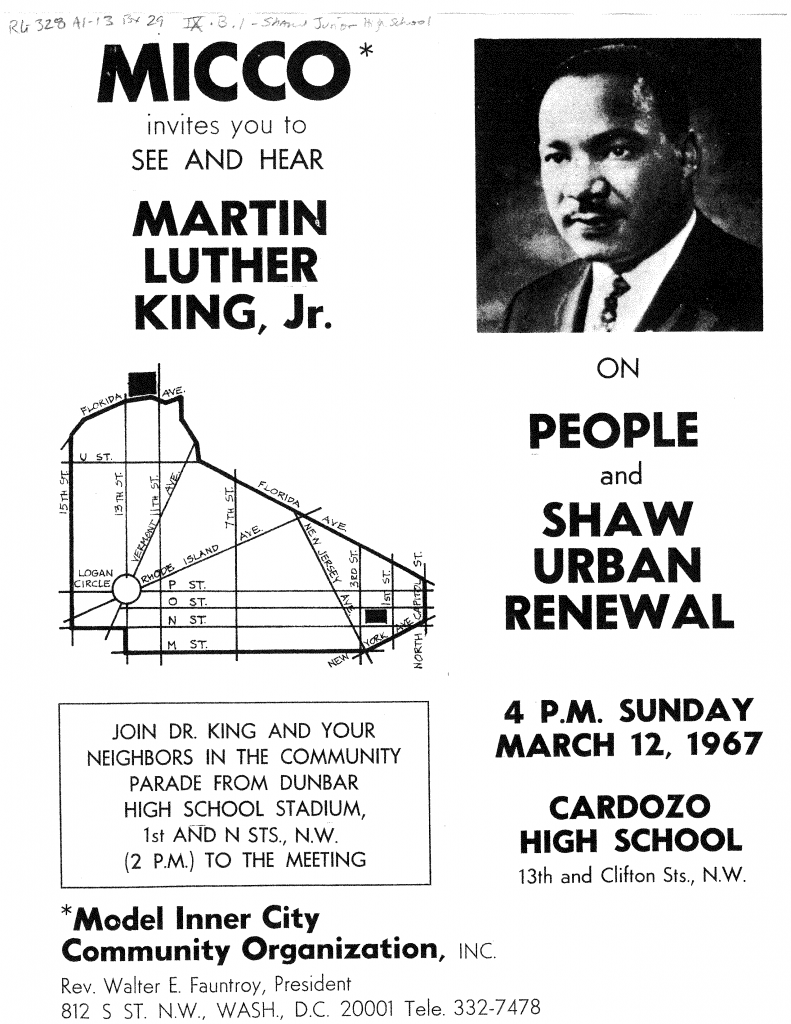
Today I was looking for a 1957 Church survey for a church that was at 1520 3rd St NW. But I can’t find that, but when I was looking for it, guess what I found? Yes, the King speech.
It seems it was part of a newsletter published by MICCO (Model Inner City Community Organization) run by Rev. Walter E. Fauntroy from 812 S St NW, which is New Bethel Baptist Church. As you can see from the above flier, Dr. King had an event in Shaw on March 12, 1967 and the newsletter was published the next day.
DC History Shaw MiccoNews MLK by Mm Inshaw on Scribd
Sorry for the quality of the copy. On the second page the first couple of words in the last 4 lines of the last paragraph are:
city. The
problems of crime
the people there to
that businessmen must
I’ll still look for that church survey…..
It’s Black History Month- Thank Shaw’s Own Carter G. Woodson
It’s February so that means it’s Black History Month. I think I will make this an annual thing, where I look at the “Father of Black History” Carter G. Woodson. He picked a week in February for Black History Week, then that week turned into a month and ta-da we are in Black History Month.
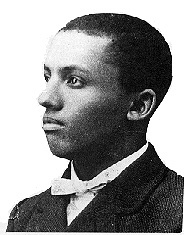
Dr. Carter G. Woodson (PhD, Harvard, 1912) noticed there was a lack of history documenting and telling the story of Black Americans in America. So he saw a problem and then fixed it. Quoting the NPS biography of Dr. Woodson, “The public knew very little about the role of African Americans in American history, and schools were not including African American history in their curriculum. He worked tirelessly throughout his life to remedy this problem, becoming nationally recognized as “the Father of Black History.” ” 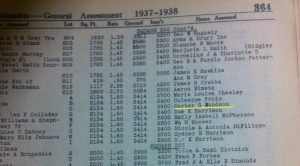
Dr. Woodson lived and worked at 1538 9th Street NW, which is in Shaw. This would explain the statue, if you missed it, at 9th and Rhode Island Avenue NW. And the National Park Service historic house.
To celebrate the month I had pondered the idea of looking at his 1912 book The History of the Negro Church, because last year I did a deep dive of his Mis-Education of the Negro. There are some problems. For one the first book I ordered had type so small I could not read it. When I did order a book these older eyes could read, I discovered the book was very boring. I have discovered that The History of the Negro Church is in the public domain (yay), on the Project Gutenberg site and may have the Kindle read it to me. I seriously looked at Fivver for audiobook narrators. On the other hand I could just wait for the next round of DC Humanities grants and have them chip in for an audiobook production of Woodson’s public domain works. Feel free to steal this idea.
Instead this year, I’ll do one chapter or more chapters (not the whole book) of The History of the Negro Church, a second review of Mis-Education, other Dr. Woodson related posts and a Truxton Circle related African American history book that was pretty good. I may do a few WSIC posts and one or two 1930 Black Home Owners of Truxton Circle.
That Martin Luther King speech I could never seem to locate
Around about the early part of the year I go pecking about looking for the speech Rev. Martin Luther King Jr gave in Shaw. And I can never find it when I look. 
Today I was looking for a 1957 Church survey for a church that was at 1520 3rd St NW. But I can’t find that, but when I was looking for it, guess what I found? Yes, the King speech.
It seems it was part of a newsletter published by MICCO (Model Inner City Community Organization) run by Rev. Walter E. Fauntroy from 812 S St NW, which is New Bethel Baptist Church. As you can see from the above flier, Dr. King had an event in Shaw on March 12, 1967 and the newsletter was published the next day.
DC History Shaw MiccoNews MLK by Mm Inshaw on Scribd
Sorry for the quality of the copy. On the second page the first couple of words in the last 4 lines of the last paragraph are:
city. The
problems of crime
the people there to
that businessmen must
I’ll still look for that church survey…..
At the DC Archives- Shaw School Urban Renewal
It has been a long while since I checked in on the DC Archives. I have opinions, but as I get older I know I should keep them to myself, for professional reasons, as my day job is in the field. What I will say is that I find it frustrating that there isn’t more available to the public on-line, the long promised new building has yet to be built, there are records that logically should be open that aren’t, and DC government agencies seem to be unclear as to where their records are.
Okay, now that’s off my chest.
I checked in on the DC Archives on-line to see if there was any improvement since the last time I went looking for something. The answer was yes, there was some improvement. One of my biggest complaints was that they didn’t have a decent catalog. You see many small archives are at universities and colleges, so their stuff sometimes sit on school library website, and librarians are super duper stars at getting information to the public. State archives vary. Some states are better than others, but there is usually a catalog. There are companies out there, go to an ALA conference, or even SAA and you will find companies that have catalogs with public sides, so the public can see what the heck you have. But if you’re too cheap/wary for that, there is always throwing PDFs of finding aids on your website.
One of those fine PDFs is for the Shaw School Urban Renewal District Case Files, 1967-1968. I have heard tale of this survey. What would be interesting is to see what buildings were found to be derelict in the 1968 survey that still stands today and has been renovated and if any had been demolished. What I find most useful is the list, on the last page, of all the squares in the Shaw neighborhood.
1957 Church Survey: 12th Street Christian
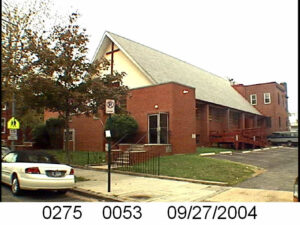 So once again I dip into the 1957 Northwest Urban Renewal Area Church Survey, this time it is Twelfth Street Christian Church tucked back at 1812 12th Street NW.
So once again I dip into the 1957 Northwest Urban Renewal Area Church Survey, this time it is Twelfth Street Christian Church tucked back at 1812 12th Street NW.
Looking at the survey, it was a black church, still is, and very active. It was 50% white collar at the time of the survey, with the next biggest group being skilled labor. When asked about relocating, the respondent wrote that they believed African Americans were still moving to the area, but if they had to relocate it would be to NE DC where the majority of their congregants lived. Yeah, this was a commuter church in 1957, and I guess it remains so in the current year.
CS 45 Twelfth Street Christian by Mm Inshaw on Scribd
2020 Michelin Guide Bib Gourmands in Shaw
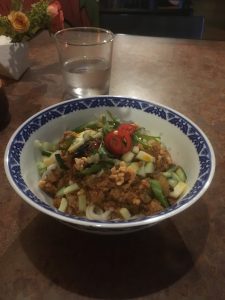
Michelin has their guide out on-line and there are a few Shaw and Shaw adjacent places on the list.
Chercher– 1334 9th St NW. There are two locations. I’m assuming they are talking about the one in Shaw.
Hanumanh– Normally at 1604 7th St NW but they are undergoing some “unexpected” repairs. So they are on 14th St for now.
Pearl Dive Oyster Palace– 1612 14th St NW.
Red Hen– 1822 1st St NW. Not in Shaw but in walking distance from our house, so Shaw adjacent as far as I’m concerned.
Royal– 501 Florida Ave NW. Another Shaw adjacent place but is actually Shaw adjacent. You can sit out side and look longingly across Florida Ave and see Shaw.
Supra– . Georgian food y’all. You can argue that it’s in Mt. Vernon.
Tiger Fork– 922 Blagden Alley, NW. We keep meaning to go here.

Unconventional Diner- 1207 9th St NW. Once again we can argue about where this is, Mt. Vernon/Shaw. I’m going to link to their OpenTable page because their website has been hijacked.
1957 Church Survey: St. Augustine Catholic Church
I mentioned this one earlier this month, well its school, as it is one of 3 private schools in Shaw. Anywho, St. Augustine is at 1717 15th St NW, on the upper end of the neighborhood.
It was a big church with a chunk of the parishioners (50%) in the urban renewal survey area. I’m a convert to the church, but the sense I get is back then, when this survey was conducted, there were parish districts and you were supposed to go to the church for the district you lived in. Another interesting thing about the demographics is that it had a tiny white population, 3%, while the rest was Black. It is still a predominately African American Catholic Church.
Anyway, here’s the 1957 survey for St. Augustine:
CS 30 St Augustine by Mm Inshaw on Scribd

